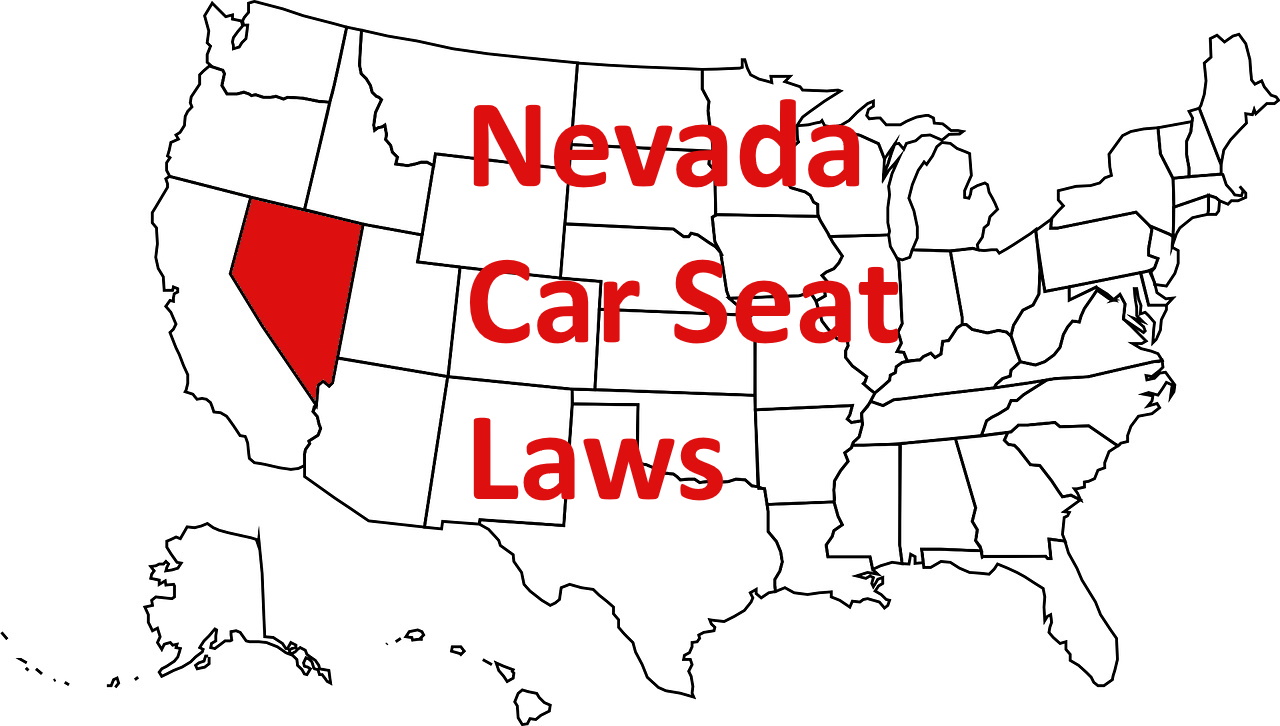Editor’s note: In 2022, this article was updated to link to a more appropriate section of the statute and to reflect changes in Nevada car seat law effective in 2022.
In Nevada law, a child under six years old and up to 57 inches tall being transported in a motor vehicle must be secured in a child restraint system. A child restraint system is any device designed to restrain, seat, or position a child in a motor vehicle, including integrated child seats, booster seats and belt-positioning seats designed to elevate or position a child to be secured by a safety belt, and adjustable safety belts specifically designed to accommodate children. Children less than two years old must be secured in a rear-facing car seat in the back seat of a motor vehicle. A child between six and seventeen years old or weighing more than sixty pounds must wear a safety belt when driving or riding in the front or back seat of a passenger car.
Children Less than Two Years Old
Children less than two years old must be secured in a rear-facing child passenger restraint system in the rear seat of a vehicle designed to transport passengers. The car seat must be approved by the U.S. Department of Transportation and correctly installed following the manufacturer’s directions or by the recommendations of the National Highway Traffic Safety Administration (NHTSA). The child must also fall within the height and weight requirements for the car seat.
Children Up to Six Years Old and 57 Inches Tall
A child under six years old and up to 57 inches tall being transported in Nevada in a motor vehicle equipped to carry passengers must be secured in a child restraint system which is installed inside the motor vehicle; appropriate for his or her size and weight; safely and securely attached to the motor vehicle according to the manufacturer’s instructions or in a manner approved by the National Highway Traffic Safety Administration; and complies with Federal Motor Vehicle Safety Standards in 49 C.F.R Part 571.
Children Six to Seventeen Years Old or Over 57 Inches Tall
Nevada seat belt law states that a child between the ages of six and seventeen years old or over 57 inches tall must wear a safety belt when driving or riding in the front or back seat of a passenger car weighing less than 10,000 pounds on a Nevada highway, road, or street, if a safety belt is available for his or her seating position.
Penalties for Violations
If you violate Nevada’s child restraint system law, you may be fined between $100.00 and $500.00 and ordered to perform between 10 hours and 50 hours of community service for a first offense. You may be fined between $500.00 and $1,000.00 and ordered to perform between 50 hours and 100 hours of community service for a second offense. You may have your driver’s license suspended for between 30 days and 180 days for a third or subsequent offense.
If you provide proof of satisfactory completion of a training and child restraint system inspection program approved by the Department of Public Safety within 60 days of your sentencing, your fine or community service may be waived for a first offense or reduced by one-half for a second offense if you have not previously had a fine or community service waived. The program may charge you a reasonable fee which may include the cost of a child restraint system, if provided. A violation of Nevada’s child restraint system law is not considered a moving traffic violation.
If you violate Nevada’s safety belt law, you may be fined up to $25.00 or sentenced to perform community service hours. A violation of Nevada’s safety belt law is not considered a moving traffic violation.
Law Enforcement May Not Stop Your Vehicle for a Suspected Violation of the Safety Belt Law
You may be cited for a violation of Nevada’s safety belt law only if your vehicle has been halted or you have been arrested for another alleged violation or offense.
Exemptions
Your child may be exempt from Nevada’s child restraint system law and Nevada’s safety belt law if he or she is being transported by public transportation, such as a taxi, school bus, or emergency vehicle.
Children under two years old can be secured in a rear facing car seat in the front seat if the front side passenger airbag is deactivated, the child has health conditions that require them to ride in the front, or all the back seats are occupied by children under two years old or the vehicle doesn’t have back seats.
Your child may be exempt from Nevada’s child restraint system law if you have in your vehicle a signed statement from a physician indicating that the use of a child restraint system for your child would be impractical or dangerous due to his or her weight, physical unfitness, or medical condition.
Your child may be exempt from Nevada’s safety belt law if you have a written statement from a physician certifying that he or she is unable to wear a safety belt for medical or physical reasons.
Your child may be exempt from Nevada’s safety belt law if your motor vehicle is not required by federal law to be equipped with safety belts or if your motor vehicle or seating positions in your motor vehicle have been exempted because compliance would be impractical.
FAQ
What is Nevada booster seat law?
Nevada car seat law does not state when a child can ride in a booster seat. Children between two years old and six years old who are less than 57 inches tall must be secured in an child passenger restraint system appropriate for their height and weight.
What are Nevada car seat laws for rear facing car seats?
Nevada child car seat law states that children less than two years old must be secured in a rear facing car seat in the back seat of a motor vehicle.
What are Nevada front seat laws?
The NHTSA has their own recommendations to keep children in the back seat until they are 12 years old. Nevada car seat law does allow for some exceptions for a child to ride in the front seat, such as there are no rear seats in the vehicle, all the rear seats are taken by children two years old and younger, or your child has a medical condition that requires them to ride in the front seat. If you put your child in a rear facing car seat in the front seat, you must deactivate the passenger air bag.
* Ms. Blake is licensed in the state of Maryland. The information provided in this article does not constitute legal advice and does not create an attorney-client relationship.

